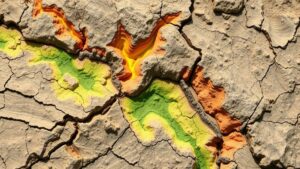Mining Historical Shipbuilding Records for Clues to Lost Cargo
Mining Historical Shipbuilding Records for Clues to Lost Cargo
The study of historical shipbuilding records provides invaluable insights into maritime history, trade practices, and the mysteries surrounding lost cargo. Shipbuilding records offer a wealth of information regarding the vessels themselves, cargo specifications, and operational limitations, enabling researchers to piece together the stories of those maritime endeavors that were ultimately lost at sea.
The Importance of Shipbuilding Records
Shipbuilding records are key documents that detail the construction of vessels, including specifications such as dimensions, type of materials used, and intended purpose. This information is crucial for understanding how a ship was designed to handle specific types of cargo.
Types of Historical Shipbuilding Records
Historical shipbuilding records can vary significantly by region and period. can include:
- Ship logbooks documenting voyages
- Blueprints and specifications from shipyards
- Notices of cargo laden and destination
- Insurance records pertaining to shipped goods
Example Case Studies
To illustrate the value of these records, consider the case of the SS Central America, a sidewheel steamer that sank in 1857 off the coast of South Carolina. Historical records indicate that she was carrying gold from the California gold rush back to the Eastern United States. The ship’s logs and cargo manifests provide crucial data regarding the ships last journey and the type of cargo it was carrying. significance of this case became clear when the ship was rediscovered in 1988, leading to the recovery of over $100 million in gold.
An Analytical Approach to Lost Cargo
Also to yielding valuable information about ship designs and their intended cargo, historical records can also reveal contextual factors that contributed to a vessels loss. Analyzing the operational conditions, such as the weather reports and navigational hazards at the time of a ships sinking, can provide critical insights into accidents that may have affected the cargo.
Utilizing Archives and Digital Databases
The advent of digital archiving has made accessing historical records far more feasible for researchers. Institutions like the National Archives and the British Library have digitized numerous documents related to maritime history, allowing scholars to analyze shipbuilding practices and cargo documentation without geographical constraints.
Statistical Analysis of Ship Losses
Recent studies conducted by maritime historians have shown that over 10,000 merchant ships sank globally between 1800 and 1950. Analyzing these losses has revealed patterns in ship design linked to cargo types, including the susceptibility of certain materials to water damage or weight distribution issues during heavy seas. For example, wooden-hulled ships, while sturdy, often faced challenges carrying heavy cargo like coal or iron, leading to structural failures.
The Role of Interdisciplinary Collaboration
Integrating expertise from various fields–such as archaeology, history, and marine engineering–can enhance the analysis of shipbuilding records. Collaborations across disciplines can yield multifaceted insights that traditional analyses alone might overlook.
Technology in Research
Emerging technologies, including Geographic Information Systems (GIS) and 3D modeling, can visualize ship routes and cargo losses. GIS can combine data on shipping lanes with meteorological data to contextualize historical events. For example, a GIS analysis of transatlantic shipping routes during the infamous hurricane of October 1835 can unearth connections between shipping losses and climate phenomena.
Conclusion and Actionable Takeaways
Mining historical shipbuilding records reveals not only the craftsmanship of maritime vessels but also the intricate stories of the cargo they carried–cargo that often remains lost due to natural calamities or navigational errors. As researchers continue to delve into these archives, it is imperative to leverage technology and interdisciplinary approaches to achieve a deeper understanding of maritime history.
- Encourage collaboration among historians, archaeologists, and marine engineers.
- Promote digital archiving initiatives for greater access to historical records.
- Use modern analytical technologies to deepen the understanding of historical shipping data.
Through rigorous research and collaborative efforts, the mysteries of lost cargo can be systematically unraveled, contributing to the broader understanding of maritime history and its ongoing impact today.



